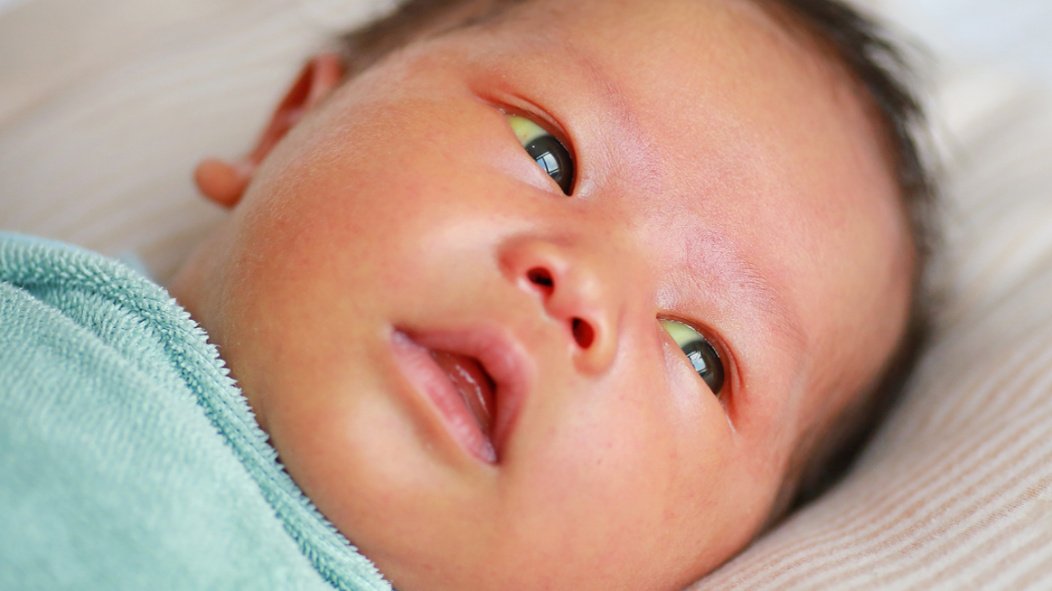Newborn Jaundice
What is Jaundice?
Jaundice is the medical term for a yellowish tinge of the skin. Newborn jaundice affects nearly all babies but is most common in premature babies, those born before 38 weeks. It is not a disease, but rather a sign of an elevated blood bilirubin level.
Bilirubin is a substance naturally present in the body. One reason that bilirubin levels are higher in babies in particular is that more red blood cells are broken down in babies bodies (and as a result, more bilirubin is produced). Jaundice is not painful and is usually not harmful.
A yellow colour can be seen on the skin of babies with higher than normal blood levels of bilirubin, a condition called "hyperbilirubinemia," when bilirubin builds up in the skin however in babies with darker skin, jaundice may not be visible even if they have high blood bilirubin levels.
In some babies serious medical conditions can occur if hyperbilirubinemia is not treated. The presence of jaundice allows doctors to identify babies who are at risk of developing severe hyperbilirubinemia. If this happens, it can cause damage to the nervous system, potentially causing brain damage. Fortunately, safe and effective treatments are available.
What is the treatment for Jaundice?
The aim of treating jaundice is to safely reduce the level of bilirubin. Babies with mild hyperbilirubinemia may need no treatment at all.
Phototherapy ("light" therapy) is the most common medical treatment for hyperbilirubinemia in babies.
The treatment focuses on frequent feeding (supporting breastfeeding or supplementing with formula or donor breast milk) and phototherapy ("light" therapy) which is the most common medical treatment for hyperbilirubinemia in babies. In most cases, phototherapy is the only treatment required and is successful for almost all babies. The baby's skin surface is exposed to special blue light, which breaks bilirubin into compounds that are easier to eliminate in stool and urine. Phototherapy is usually provided in the hospital, but sometimes it can be provided at home if the baby is healthy and at low risk for complications.
What are the symptoms of Jaundice and what should I look out for?
Jaundice initially causes the skin to become yellow however this can develop to a colouring of the gums, palms of the hands, and soles of the feet, as well as the whites of the eyes. These changes may be hard to see in children with darker skin or if a baby is unable to open their eyelids.
The yellowing is noticeable first in the face, and then the chest, stomach area, arms, and then legs. However, in some babies, the head-to-toe progression of jaundice may not be seen, and the jaundice may appear over the whole body like a tan.
The colour can be checked by pressing one finger on a baby's forehead or nose (called "blanching" the skin). If the skin is jaundiced, it will appear yellow when the finger is removed.
This should be checked more than once before a baby leaves the hospital after birth. If you bring your baby home sooner than three days after birth, you should check their skin colour every day until the next scheduled appointment. The baby should be taken to see a doctor or nurse for a checkup within one to three days after going home.
A sign of worsening jaundice is if the "whites" of the eyes appear yellow.
Call your baby's doctor if there are signs of worsening jaundice such as:
The yellow color is visible at the knee or lower, is more dark in appearance (changing from a lemon yellow to an orange yellow color), or if the "whites" of the eyes appear yellow
The baby develops a fever
The baby has any difficulty eating
The baby is more sleepy than usual or is hard to wake up
The baby is irritable and is difficult to console
The baby arches their neck or body backwards
How long will Jaundice last in my baby?
Jaundice often reaches highest levels three to four days after birth and usually goes away by one to two weeks after birth. In babies who are born at 38 weeks or less or those who are significantly jaundiced, the jaundice may require more time to go away.



